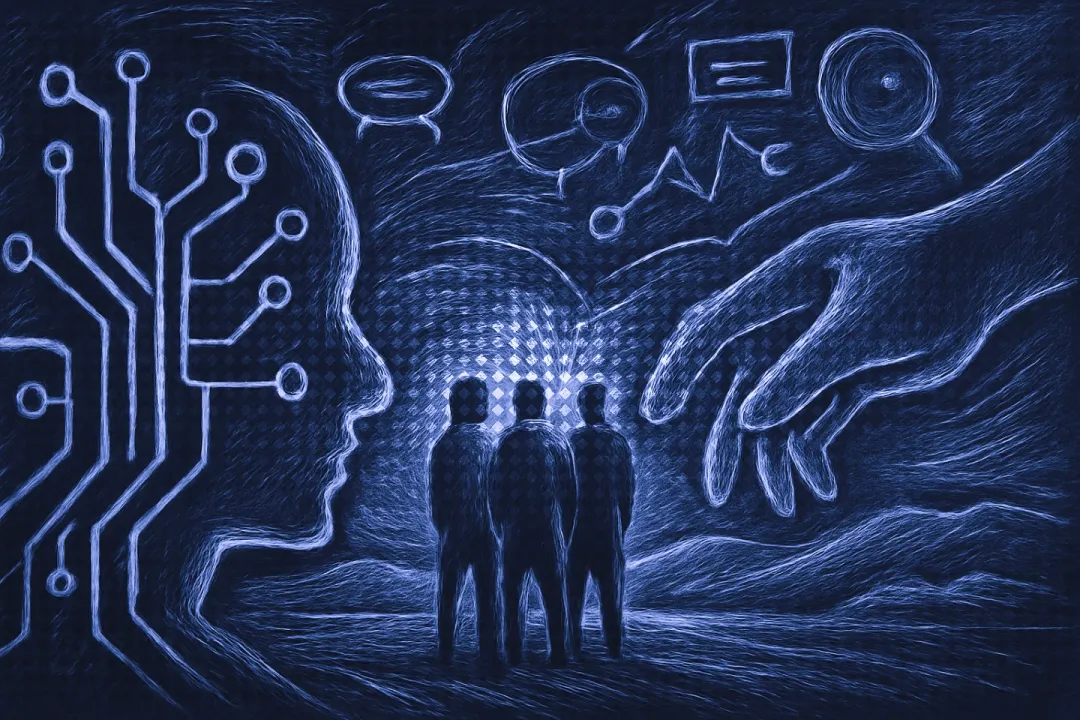
AI vs Human Quality Analysts: Finding the Right Balance in QA
An honest look at what AI can and cannot do in quality assurance, and how human QA analysts’ roles evolve alongside AI.
AI vs Human Quality Analysts: Finding the Right Balance in QA
The rise of Artificial Intelligence (AI) in call centers, particularly in Quality Assurance (QA), has sparked a common question: will AI replace human QA analysts? It’s a valid concern, as AI technologies like Speech Analytics and Machine Learning demonstrate impressive capabilities in monitoring and evaluating customer interactions. However, the most effective approach isn’t about replacement, but collaboration. AI and human analysts each bring unique strengths to the table. The key to a truly exceptional QA program lies in finding the right balance, creating a powerful synergy that elevates quality beyond what either could achieve alone.
Let’s explore what AI excels at, where human expertise remains irreplaceable, and how your team can redefine QA roles to harness the best of both worlds. This is about empowering your human team with AI tools, not sidelining them.
Strengths of AI in QA: Consistency, Scale, and Speed
AI brings transformative capabilities to the QA process, addressing many limitations of traditional manual methods:
- Comprehensive Coverage (100% Monitoring): Perhaps AI’s most significant advantage is its ability to analyze every single customer interaction—calls, chats, emails. Unlike manual QA, which typically reviews only 1-2% of interactions due to time constraints, AI can process vast volumes of data. This means no critical issue or outstanding performance goes unnoticed.
- Consistency and Objectivity: AI applies predefined scoring criteria with unwavering consistency. It doesn’t have bad days, biases, or varying interpretations that can sometimes affect human scoring. This leads to fairer and more reliable evaluations for agents.
- Speed and Efficiency: AI can transcribe, analyze, and score interactions in a fraction of the time it would take a human. This means faster feedback loops for agents and quicker identification of emerging trends or issues. For example, AI can auto-score calls almost immediately after they conclude.
- Pattern Recognition at Scale: AI excels at identifying subtle patterns and trends across thousands or even millions of interactions that might be invisible to human analysts reviewing small samples. It can pinpoint recurring customer pain points, common agent errors, or effective behaviors that lead to positive outcomes.
- Real-time Analysis Capabilities: Some AI tools can provide real-time alerts or feedback during live interactions, enabling immediate intervention or agent guidance. For instance, an AI could flag a compliance miss or suggest a relevant knowledge base article to an agent mid-call. To learn more about this, you might explore Real-Time QA: How AI Delivers Instant Feedback to Call Center Agents.
Strengths of Human Analysts: Nuance, Empathy, and Coaching
Despite AI’s power, human intelligence and emotional capabilities remain crucial in QA:
- Understanding Nuance and Context: Language is complex. Human analysts can grasp sarcasm, subtle emotional cues, cultural nuances, and complex contexts that AI might misinterpret. For example, AI might flag an agent’s informal tone, but a human analyst might recognize it as appropriate rapport-building with a long-term customer.
- Handling Ambiguity and Exceptions: Not every interaction fits neatly into a predefined scorecard. Human analysts can use their judgment to evaluate unique situations, complex problem-solving, or interactions that deviate from standard scripts for valid reasons.
- Empathy in Evaluation and Feedback: While AI can identify sentiment, human analysts can empathize with both the customer’s and the agent’s perspective. This is vital for delivering constructive, empathetic feedback that motivates agents rather than discourages them.
- Coaching and Mentoring: Effective coaching requires more than just data; it requires human connection, understanding individual learning styles, and the ability to inspire growth. Human QA specialists are best equipped to translate AI-generated insights into personalized coaching sessions that resonate with agents.
- Strategic Thinking and Process Improvement: Human analysts can look beyond individual call scores to identify systemic issues, suggest improvements to processes or training programs, and contribute to the overall QA strategy.
The New Model: AI + Human Collaboration
The future of call center QA is not AI versus humans, but AI plus humans. This collaborative model leverages the strengths of both:
- AI Handles the Heavy Lifting: AI takes on the repetitive, data-intensive tasks like transcribing all calls, performing initial scoring based on defined criteria, and flagging interactions that need attention (e.g., low scores, compliance issues, high negative sentiment).
- Humans Focus on High-Value Activities: This frees up human QA analysts to:
- Review AI-Flagged Interactions: Investigate complex cases or outliers identified by AI, providing deeper analysis and context.
- Calibrate and Train the AI: Provide feedback to the AI system on its scoring accuracy, helping to refine its algorithms and improve its performance over time. This is a key aspect of Machine Learning – the AI learns and gets better.
- Deliver Targeted Coaching: Use AI-generated data and specific call examples to provide personalized, impactful coaching to agents.
- Analyze Trends and Drive Improvement: Focus on analyzing overarching trends identified by AI to recommend strategic improvements to training, processes, or products.
Imagine a QA team where analysts spend less time on rote listening and more time developing agent skills and improving customer experience strategy. This is the power of AI augmentation.
Redefining QA Roles: From Scorekeepers to Quality Champions
The introduction of AI prompts an evolution in the role of the QA analyst:
- From Scorer to Coach: The primary focus shifts from merely scoring calls to using data to help agents develop and succeed.
- From Sampler to Analyst: Instead of reviewing a small sample, analysts interpret comprehensive data sets, identify root causes, and contribute to strategic decision-making.
- New Skills Required: QA professionals may need to develop new skills in data analysis, understanding AI outputs, and leveraging technology for coaching.
This evolution can make the QA role more engaging, strategic, and impactful, offering new career development paths.
Addressing Team Concerns and Fostering Adoption
It’s natural for teams to have concerns when AI is introduced. Open communication and involvement are key:
- Transparency: Clearly explain why AI is being implemented and how it will benefit both the agents (fairer, faster feedback) and the QA team (more strategic work).
- Involvement: Involve QA analysts in the selection, configuration, and calibration of the AI tool. Their expertise is invaluable.
- Training: Provide comprehensive training not just on how to use the tool, but also on how AI works and how their roles will evolve.
- Emphasize Augmentation: Frame AI as an assistant or a tool that enhances their work, not a replacement.
Conclusion: The Future of QA is AI + Human Collaboration
The future of QA is not AI versus humans, but AI plus humans. This collaborative model leverages the strengths of both: AI handles the heavy lifting, while humans focus on high-value activities. This approach creates a powerful synergy that elevates quality beyond what either could achieve alone.
